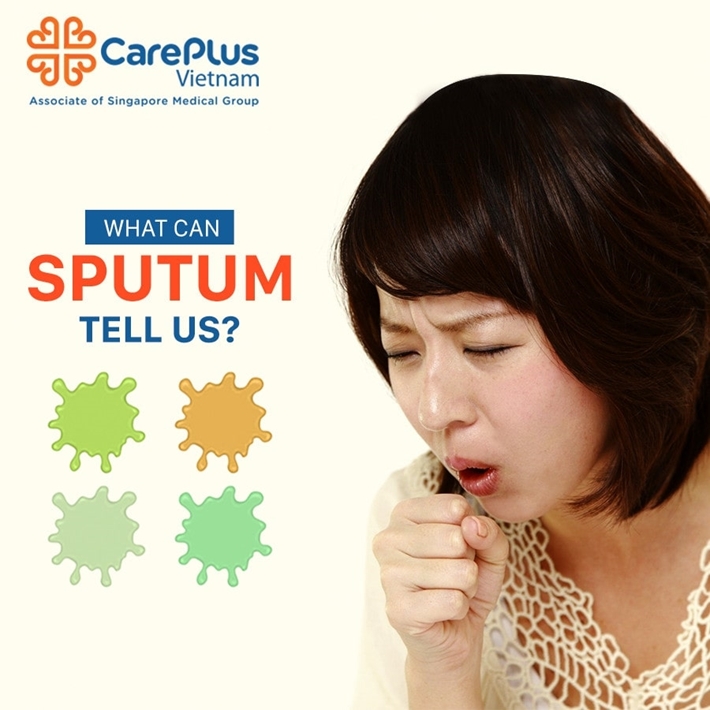What Does the Color of My Phlegm Mean?

2/27/2022 11:08:16 PM
Why phlegm changes color
Phlegm is a type of mucus made in your chest. You typically don’t produce noticeable amounts of phlegm unless you are sick with a cold or have some other underlying medical issue. When you cough up phlegm, it’s called sputum. You may notice different colored sputum and wonder what the colors mean. Here’s your guide to different conditions that produce phlegm, why it might be different colors, and when you should see a doctor.
What does green or yellow phlegm mean?
If you see green or yellow phlegm, it’s usually a sign that your body is fighting an infection. The color comes from white blood cells. At first, you may notice yellow phlegm that then progresses into green phlegm. The change occurs with the severity and length of the potential sickness.
Green or yellow phlegm is commonly caused by: Bronchitis, Pneumonia, Sinusitis, Cystic fibrosis
What does brown phlegm mean?
You may also consider this color “rusty” in appearance. The color brown often means old blood. You may see this color after your phlegm appears red or pink.
Brown phlegm is commonly caused by: Bacterial pneumonia, Bacterial bronchitis, Cystic fibrosis, Pneumoconiosis, Lung abscess.
What does white phlegm mean?
You may experience white phlegm with several health conditions.
White phlegm is commonly caused by: Viral bronchitis, GERD, COPD, Congestive heart failure. Seek immediate medical attention if you’re having difficulty breathing.
What does black phlegm mean?
Black sputum is also called melanoptysis. Seeing black phlegm may mean you have inhaled a high amount of something black, like coal dust. It may also mean you have a fungal infection that needs medical attention.
Black phlegm is commonly caused by:
Smoking. Smoking cigarettes or certain drugs like crack cocaineTrusted Source may lead to black sputum.
Pneumoconiosis. One type in particular, black lung disease, may cause black sputum. It mostly affects coal workers or anyone else who has frequent exposure to coal dust. Coughing up black sputum may also be accompanied by shortness of breath.
Fungal infection. A black yeast called Exophiala dermatitidis causes this infection. It’s an uncommon condition that can cause black phlegm. It more often affects people who have cystic fibrosis.
What does clear phlegm mean?
Your body produces clear mucus and phlegm on a daily basis. This phlegm is mostly filled with water, protein, antibodies, and some dissolved salts to help lubricate and moisturize your respiratory system.
An increase in clear phlegm may mean that your body is trying to flush out an irritant, like pollen, or some type of virus.
Clear phlegm is commonly caused by: Allergic rhinitis, Viral bronchitis, Viral pneumonia.
What does red or pink phlegm mean?
Blood is likely the cause of any shade of red phlegm. Pink is considered another shade of red, so it may also indicate that there is blood in your phlegm, just less of it. Red or pink phlegm is commonly caused by: Pneumonia, Tuberculosis, Congestive heart failure (CHF), Pulmonary embolism, Lung cancer.
Contact your doctor if you’re producing more phlegm than normal, having intense coughing spells, or notice other symptoms like weight loss or fatigue.
What if the phlegm texture changes?
The consistency of your phlegm can change due to many reasons. The scale ranges from mucoid (frothy) and mucopurulent to purulent (thick and sticky). Your phlegm may get thicker and darker as an infection progresses. It may also be thicker in the morning or if you are dehydrated.
Clear phlegm that’s associated with allergies is generally not as thick or sticky as the green sputum you see with bacterial bronchitis or the black phlegm from a fungal infection.
What does frothy phlegm mean?
Moving beyond colors now: Is your phlegm frothy? Another word for this texture is “mucoid.” White and frothy phlegm may be another sign of COPD. A secondary bacterial infection may also occur, which may change the phlegm to yellow or green.
Is it both pink and frothy? This combination may mean you are experiencing congestive heart failure in a late stage. If you have this condition along with extreme shortness of breath, sweating, and chest pain, call your local emergency services immediately.
How to get rid of sputum
There are times when phlegm is a reason to call your doctor right away. Some phlegm-causing conditions respond best to antibiotics, other medications, and breathing treatments. In some cases, surgery may be necessary.
Some of the conditions on this list are viral. That means they don’t respond to antibiotics. Instead, you simply need to eat well, hydrate, and rest to heal. You can also try measures like:
- Using a humidifier in your home. Keeping the air moist can help loosen phlegm and allow you to cough it up more easily.
- Gargling with salt water. Mix a cup of warm water with 1/2 to 3/4 teaspoon of salt, and gargle to loosen any mucus from allergies or a sinus infection that’s affecting your throat.
- Using eucalyptus oil. This essential oil works by loosening the mucus in your chest and can be found in products like Vicks VapoRub.
- Taking over-the-counter expectorants. Medications like guaifenesin (Mucinex) thin your mucus so it flows more freely and you can more easily cough it up. This medication comes in formulations for adults and children.